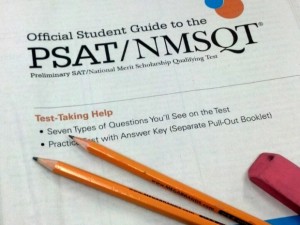 What high school student doesn’t need to know how to properly annotate a reference source, find a synonym for simple words to spice up their essays, or do some research for term papers? Today’s App Tuesday, 8 Writing and Research Apps, should help with these tasks.
What high school student doesn’t need to know how to properly annotate a reference source, find a synonym for simple words to spice up their essays, or do some research for term papers? Today’s App Tuesday, 8 Writing and Research Apps, should help with these tasks.
Apple and Android (free)
We’ve all turned to the dictionary over the course of a marathon paper-writing session. Whether it’s to find the definition of a word in a source, or to find a synonym for a desired word, having a dictionary that is easy to reference would be a tremendous asset. Dictionary.com has made its vast compendium of resources, including its medical, science and rhyming dictionaries. The app is available for easy reference, even in the absence of an Internet connection. (Scroll down the Dictionary.com home page for the app links).
Apple and Android (free)
Imagine Easy Solutions has found one way to simplify the sometimes tedious process of citing the works referenced in your paper. Questions over how to treat a later edition of a book, which authors’ names are needed, or where to place colons and commas are now answered. Their EasyBib allows works to be cited in MLA, APA or Chicago formats by scanning the barcode of a book or typing its name. References or works cited pages come together with ease, though you still will have to make in-text citations on your own. (Scroll down the Easybib.com home page for the app links).
Wolfram Alpha
Apple, Android, Kindle Fire, Nook ($2.99)
Anyone interested in science should download this app immediately. It’s a math machine, an interactive physics textbook and a science computer all in one. You can convert units and currencies, track unemployment figures, explore DNA or even compare dinosaurs in a flash. It’s arguably the single best reference smartphone app available, and I find some reason to use it almost every day.
Thesaurus Rex
Apple and Android ($2.99)
Loaded with more than half a million synonyms and antonyms, this app insures that you’ll never be stuck for a word again. Its word-recommendation system is clear and surprisingly intelligent, and there are also detailed definitions and explanations of words’ origins and histories. A $1.99 upgrade even provides rhymes.
Apple and Android (free)
The speech recognition feature is very, very impressive. Choose the language you speak and speak what you want it to translate. The translated text appears on the screen. Almost every language is included.
Apple (free)
Wikibot – A Wikipedia Articles Reader is a beautiful app that makes researching a truly pleasurable experience. It has bookmarking features, the ability to look up highlighted words for more details on whatever subject you’re interested in, and more. Wikibot will sync with iCloud, and you can change the font to your liking or put an image in gallery mode to see a larger view. This app is universal, supports 36 different languages, and allows you to share what you are reading via Facebook or Twitter.
Encyclopedia Britannica
Apple iPhone or iPad ($1.99 per month), Windows ($4.99 per year)
Wikipedia is great for everyday references, but when you need expertly written and thoroughly checked articles, Britannica remains the gold standard. The subscription-based iPad app is particularly attractive, because it offers more real estate to view the photos, graphs and illustrations. The better value, though, is the Windows Phone version, which gives you all 80,000 articles for a low annual fee.









 Of all the standardized tests on the market today, few are less understood than the PSAT. Almost every client who comes my way has the
Of all the standardized tests on the market today, few are less understood than the PSAT. Almost every client who comes my way has the